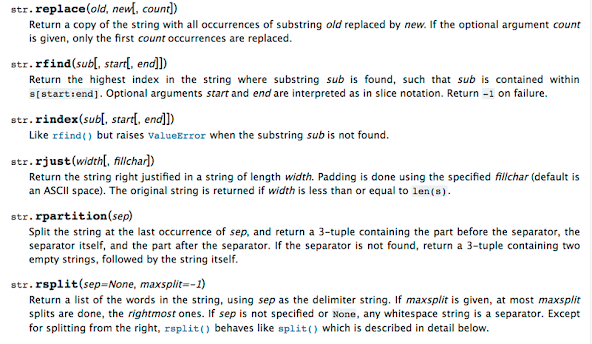string data type in Python:
String is nothing but is only set of character i.e
“Techshoot03” it set of alphabet characters “ T,e,c,h,s,h,o,o,0,3 ” . All the
set of character are get to gather and make one word and set of words are call
String.
·
Intrigue
·
Boolean
·
String
·
Double
·
Float
·
Complex
·
List
·
Tuple
·
Dict
· Set
“Mastering Python Strings: A Comprehensive Guide”
Dive deep into string manipulation, slicing, and
formatting techniques.
Cover common use cases and best practices for handling
strings.
“Python String Methods Every Developer Should Know”
Explore essential string methods like split(), join(), replace(), and more.
Provide practical examples and tips for efficient string
processing.
“Formatting Strings in Python: A Detailed Overview”
Discuss f-strings, .format(), and % formatting.
Explain when to use each method and their pros/cons.
“Exploring Python’s Built-in String Functions”
Highlight lesser-known string functions like isalpha(), startswith(),
and count().
Showcase their applications and performance
considerations.
“String Manipulation in Python: Tips and Tricks for
Efficiency”
Share tricks for optimizing string concatenation,
searching, and case conversion.
Address memory usage and performance bottlenecks.
Example : -
Code : - a = “hello techshoot03”
Print (a) -- then press the enter and check the result as
we seen in the snap
We can get at any single character in a string using an
index specified in square brackets
The index value must be an integer and starts at zero
The index value can be an expression that is computed
Lest we more undartanding we go throw the code :
Code : -
>>> a =
"hello Techshoot03"
>>> print ( a )
hello Techshoot03
>>>
>>> a = 3
>>> b = a [a-1]
Traceback (most recent
call last):
File "<stdin>", line 1, in
<module>
TypeError: 'int' object is
not subscriptable
>>> demo =
"hello techshoot03"
>>> test =
demo[1]
>>> print (test)
e
>>> a = 3
>>> b = demo[a-1]
>>> print(b)
l
>>>
The built-in function len gives us the length of a string
Code : -
>>> demo
= "hello techshoot03"
>>> print(len(demo))
17
>>>
LEN A function is some stored code that we use. A function takes some input and produces an output.
Looping and Counting of Strings : -
This is a simple loop that loops through each letter in a string and counts the number of times the loop encounters the 'a' character
Slicing Strings: -
We can also look at any continuous section of a string
using a colon operator
The second number is one beyond the end of the slice –
“up to but not including”
If the second number is beyond the end of the string, it
stops at the end
If we leave off the first number or the last number of
the slice, it is assumed to be the beginning or end of the string respectively
When the +
operator is applied to strings, it means “concatenation”
The in keyword can also be used to check to see if one
string is “in” another string
The in expression is a logical expression that returns
True or False and can be used in an if statement
String Comparison :
String Library: -
·
str.capitalize()
·
str.center(width[, fillchar])
·
str.endswith(suffix[, start[, end]])
·
str.find(sub[, start[, end]])
·
str.lstrip([chars])
·
str.replace(old, new[, count])
·
str.lower()
·
str.rstrip([chars])
·
str.strip([chars])
· str.upper()
Searching a String : -
We use the find() function to search for a substring
within another string
find() finds the first occurrence of the substring
If the substring is not found, find() returns -1
Remember that string position starts at zero
Code : -
>>>demo = 'Techshoot03'
>>> test = demo.find('Te')
>>> print(test)
1 - -- Result
You can make a copy of a string in lower case or upper
case
Often when we are searching for a string using find() we
first convert the string to lower case so we can search a string regardless of
case
The replace() function is like a “search and replace”
operation in a word processor
It replaces all occurrences of the search string with the
replacement string
Sometimes we want to take a string and remove whitespace
at the beginning and/or end
lstrip() and rstrip() remove whitespace at the left or
right
strip() removes both beginning and ending whitespace








No comments:
Post a Comment